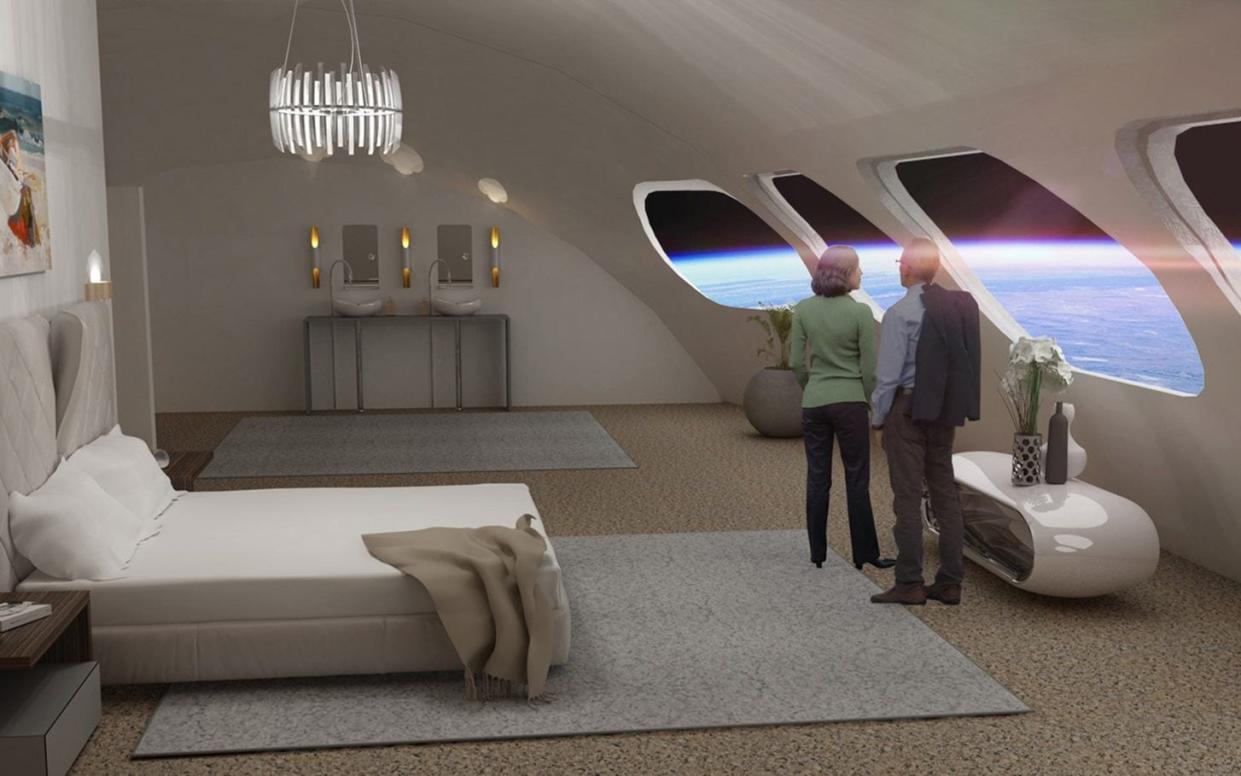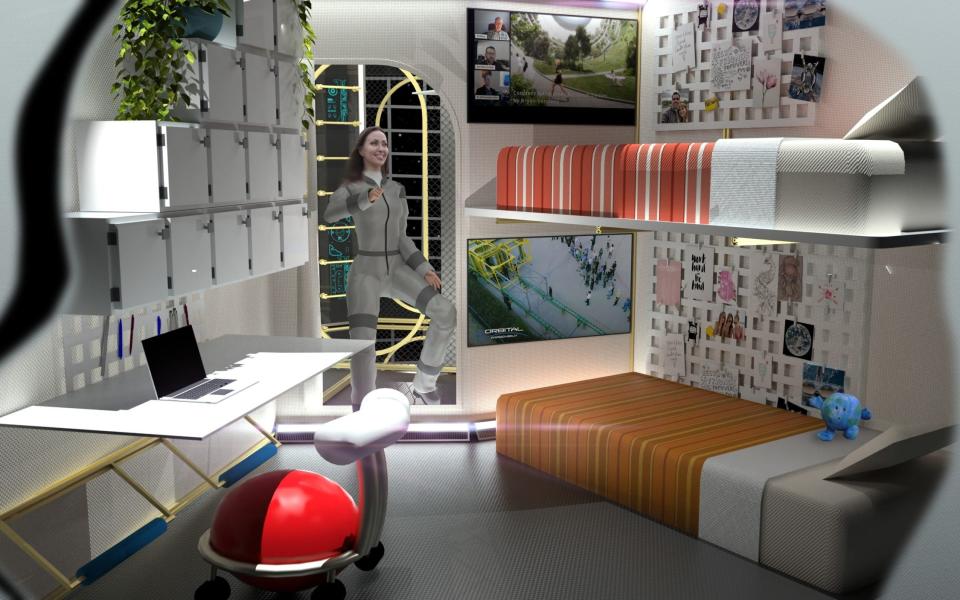Outer space and below the sea: the future of travel is almost here

If you are going to hold a tourism summit in a destination generally considered a hotspot for holidays and leisurely escapes, Les Roches Marbella is the sort of place that ticks all boxes. There it sits, three miles west of the coastal Spanish city in its name, just a mile inland from the gilded marina of Puerto Banus, and barely further from Puente Romano, the five-star resort which gleams with luxury travellers and the occasional celebrity guest.
But despite its location, Les Roches Marbella is not a chic hotel. Rather, it is a satellite campus of Les Roches International School of Hotel Management (lesroches.edu) – a private university headquartered in Switzerland. Nor does the tourism summit it staged last week (September 28-30) have much use for a beach, or the sunny disposition of the Costa del Sol. Instead, SUTUS (sutusummit.com) has much loftier – and deeper – ambitions. The Space & Underwater Tourism Universal Summit, to use its full title, is aimed at those who want to go high above the planet’s surface, or a fair distance below it.
This setting was not entirely random. The host country is keen to establish itself as a new player in the race to the galaxy, to the point that the Agencia Espacial Espanola (Spanish Space Agency) was formally established in May 2021. Indeed, this was the third time that a conference which sells itself as promoting “Tourism Beyond Natural Borders” had been held in this exact corner of Andalucia – the two previous versions (2019 and 2021) having been bisected by Covid.
This latest edition was an attempt to return to normality after the pandemic’s interruption, with in-person and virtual presentations from heavy-hitters at significant companies. But then, normality is a relative concept in an area of business where the aims can be as rarified as the air some of its key figures are hoping to breathe.

There were moments of past reflection and hard-won experience to the proceedings, perhaps best expressed by Susan Kilrain, a Nasa alumnus who piloted the Space Shuttle Columbia on two missions in the mid-Nineties. Her advice for those who might wish to follow in her “footsteps” was stark. “It’s a very dynamic ride for the first couple of minutes,” she said of her launches into space. “The G-forces start to weigh very heavily on your chest. It’s like being squashed.” Nor does the discomfort end there. “Most astronauts tend to feel sick to their stomach,” she admitted. “There are medications you can take, but the majority of space travellers feel queasy for their first few days in space.”
Not that such confessions are likely to worry those keen to look to the skies and above – or towards a time when a holiday in space might be as accessible as one upon terra firma.
“We want to make the price of going into space comparable to that of a big international holiday,” says Tim Alatorre, the chief operating officer of California-based trend-setters Orbital Assembly (orbitalassembly.com) – one of the summit’s keynote speakers. His company is at the forefront of the space industry, building private space stations – and has plans for two versions of its product to be in the heavens in the coming decades. The first, Pioneer, might comprise four connected modules, each launched individually, orbiting Earth in the conventional manner.

Over time, this could be expanded into a 24-module “big wheel” – “Voyager” – capable of generating its own artificial gravity via centrifugal force. In other words, it will rotate, allowing its guests to move around unhindered by “micro-gravity” (weightlessness). And as well as being able to hold astronauts and other professionals, conducting experiments along the lines of those already attempted on the International Space Station (ISS), it will welcome holidaymakers. “Voyager will have an area used by tourists,” Alatorre explains. “So people can come, they can play space games, they can experience micro and artificial gravity, and they can have a good time.”
At first, such trips will be exceedingly expensive. Alatorre puts a figure of US$55million on a 10-day stay in one of his company’s space stations – although he emphasises that the vast majority of this amount (around $50million) will be the cost of getting there. “Our price to stay on the station is actually very small compared to that overall number,” he continues. “And these are still early days, where participants will be early adopters and high-net-worth individuals. We anticipate prices falling as market forces come into play.”
SpaceX – (spacex.com), the aerospace behemoth founded by tech-billionaire Elon Musk – will be instrumental in this. Starship, its next-generation heavy-lift launch vehicle, is due for an orbital test flight later this year, and should, in future, have considerable passenger capacity. Alatorre has similar hopes for the Boeing Starliner, which is scheduled to have its first crewed launch in February; hope enough that, by 2040, orbital tourism should be affordable far beyond the billionaire demographic. “Ideally, by 2040, the cost of a week in a space hotel would be under €10,000,” he enthuses. “That’s the price we’d like to hit.”
If slipping outside the bounds of planetary gravity feels like a frontier too far, whatever the price of doing so, then there is always the alternative of heading the other way. Down.
Of the headline speakers booked in to talk at SUTUS 2022, the most ear-catching, perhaps, was Fabien Cousteau. If there is a ring of familiarity to the name, there should be. This is the grandson of the fabled French oceanographer Jacques Cousteau – a man continuing the “family business”, but a force in underwater exploration in his own right.

In his latest project, he is building what he describes as “the International Space Station of the sea”. Pencilled in to be operational as early as 2025, “Proteus” will be rooted to the ocean floor, some 20 metres below the waves, amid the reefs and rich biodiversity of the waters just off Curaçao. It will be quite the achievement; a sub-aqua research facility where specialists in their fields will be able to study everything from marine life and weather patterns to climate change and potential advances in medicine. But alongside this primary purpose, Proteus will also have a touristic element, with up to two of its 12 berths given over to “citizen scientists”, for a very different kind of Caribbean “holiday”.
This will be no minor undertaking, requiring visitors to go through saturation – the slow process of allowing the body to adjust to the pressures and gases involved in an extended spell underwater. “The training will be the same as with the mission specialists; all the physical and psychological parameters will be the same,” Cousteau explains. “We’ll make this as simple and safe as possible, but there are inherent risks with ‘inner space’, as there are with outer space. That said, depending on their training, guests should be able to participate while upon Proteus. We’d like them to participate like any mission specialist.”
Comparative travel costs guarantee that, while the procedures might be as demanding on mind and body as a journey to a private space station, an expedition underwater will at least be “cheaper”. Cousteau will not yet commit to a precise amount, but argues that there will be value to the experience. “Proteus isn’t going to be an inexpensive endeavour just because we won’t be using rockets,” he says. “The cost of running an underwater habitat is fairly extensive. But being part of it certainly won’t be as expensive as going to outer space for 14 minutes. Here, you will go down for a week or so, and take your time.”
Is there a middle ground? A compromise somewhere between the thermosphere and the seabed; between ultra-costly and plausible cost? Jose Mariano López Urdiales insists that there is. The CEO of Zero 2 Infinity (zero2infinity.space) was another of the key speakers at SUTUS 2022, there to outline the vision of an Andalucia-based company which intends to carry tourists up, up and away, while avoiding the astronaut-helmeted elephant in the space-travel industry’s sleekly panelled departure room. Its environmental effects.

How? With balloons. Or, at least, “the bloon” – a zero-emission craft that will use helium to rise to a height of 22 miles above sea level. A company survey of potential customers has revealed that the chance to see Earth from above is the main motivation of would-be space tourists (63 per cent of those asked said this). Urdiales argues that the “bloon” will make this dream come true without adding greenhouse gases to the atmosphere.
Four passengers (and two pilots) will spend two hours ascending to cruising altitude in a sealed capsule, and another two enjoying the view, before a descent via parachutes and airbags. “We believe that the path forward is using balloons,” he told the summit. “I am optimistic that space tourism is going to be big – but we have to think of the environmental impact.”

 Yahoo Movies
Yahoo Movies 
